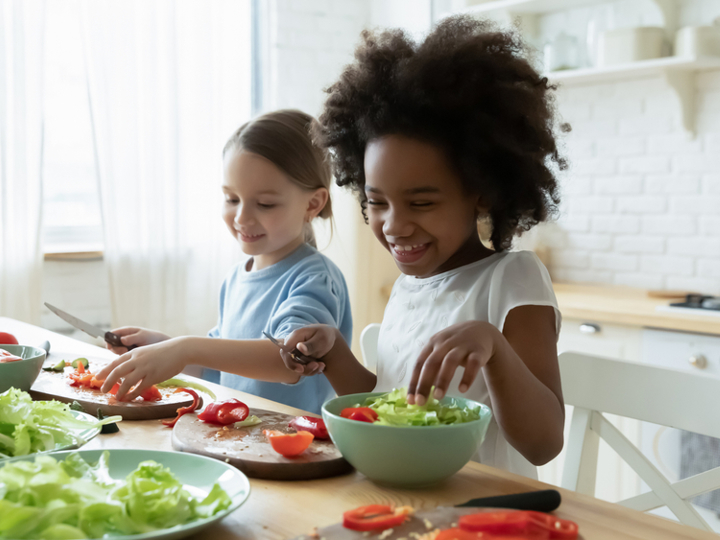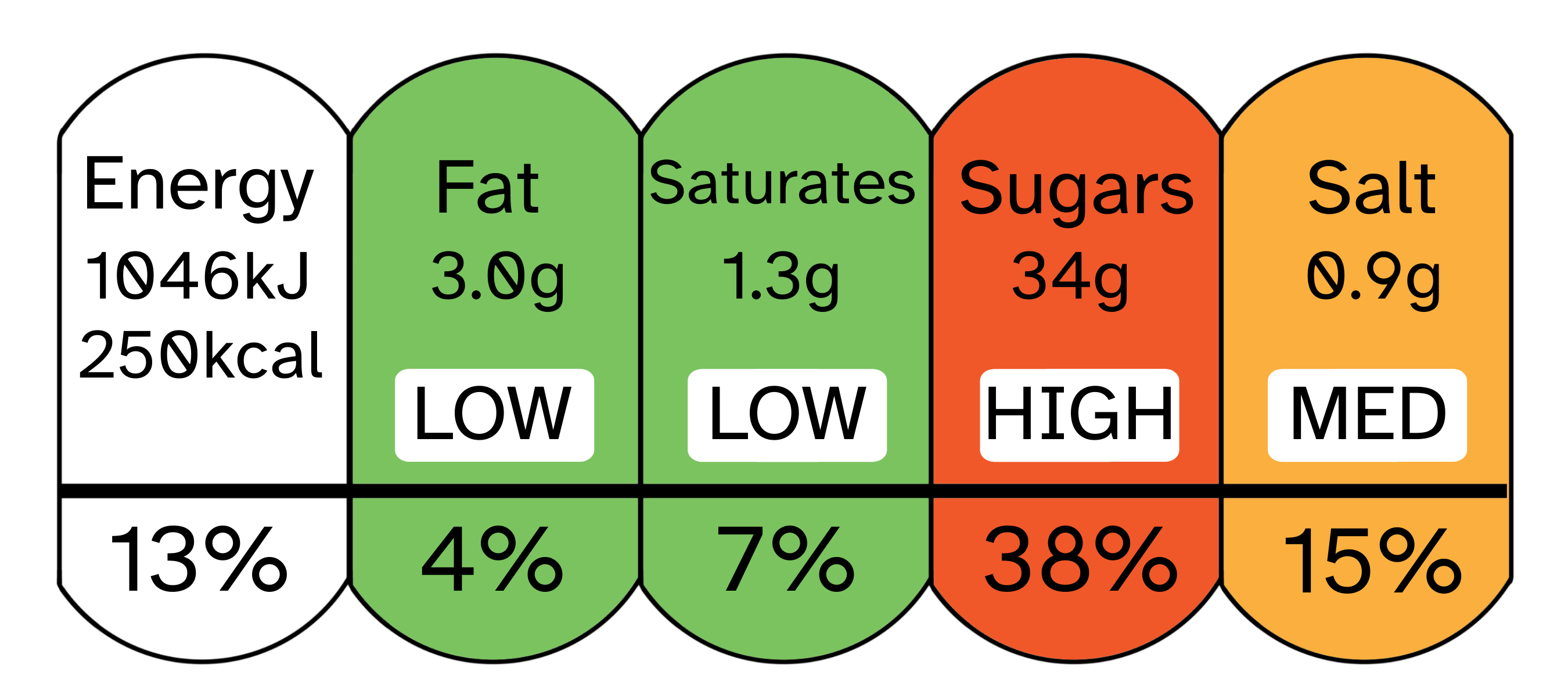Healthy eating
- 1-5 Years
- 5-11 Years
- 11-19 Years
- SEND
- Feeding and eating

Eating a healthy, balanced diet is an important part of maintaining good health, and can help you and your child feel your best. A balanced diet means eating a wide variety of foods in the right proportions, and consuming the right amount of food and drink to achieve and maintain a healthy body weight. Encouraging your child to eat healthy can also mean they are less likely to have health problems as they grow older.
How to help your child eat well
- Act as a role model for your child or young person. If they see you eating healthily, they will be much more likely to eat healthy too.
- Encourage them to eat a healthy and balanced diet. This includes eating 5 or more portions of fruit and vegetables every day. These can be fresh, frozen or tinned.
- Variety is key so try some new healthy recipes. Encourage your child to pick out some recipes they may like.
- As they get older you can explain to them how to get a good balance of the different food groups in their diet. This can help them to make healthier decisions when you’re not around. You can use the Eatwell Guides to help.
- It may help to have set mealtimes and encourage your child to eat slowly. Use mealtimes as an opportunity to talk to each other and catch up about the day.
- Encourage your child to eat whilst sitting at a table.
To help your child maintain a healthy weight, it’s important to encourage them to engage in physical activity every day. Read our information on keeping babies, children and teenagers active.

Encourage a healthy and balanced diet
Try to encourage a healthy and balanced diet. You can do this by choosing a variety of different foods from each of the food groups below. You don’t need to achieve this balance at every meal, but try to get the balance right over the course of a day or week.
The right portion size for your child
It can be difficult to work out how much you should be feeding your child. Here are a few simple tips to help with portion sizes:
- Start by giving your child a smaller serving. If they are still hungry once they’ve finished, they can ask for more.
- Try to avoid using adult sized plates, as it may encourage portion sizes which are too large for your child.
- As your child gets older, they will require different amounts of food.
- Remember that your child doesn’t have to finish everything on their plate or eat more than they want to.
Check labels on packaged foods
When buying packaged foods, always check the nutrition labels. Most food and drink will have a traffic light label on the front of the packaging. This contains information on energy, fat, saturated fat, sugars and salt.
These amounts will be colour coded in red, amber or green.
- red means high
- amber means medium
- green means low

Choose foods lower in fat, salt and sugar. Normally, food and drink with mostly green on the label is a healthier choice. Read more about food labels. If a product says sugar free or low fat, just check the ingredients as they may have been replaced with sweeteners or additional ingredients you might not have expected.
You can also try cutting down on sugar, salt and saturated fat by making some healthier food swaps. Why not try swapping sausages for low-fat mince and making spaghetti bolognese. You can also swap your child's cake bars and cereal bars for a slice of malt loaf or a fruited teacake. Read more about healthy swaps.
Video taken from the Food Standards Agency.
What drinks to give your child
Encourage your child to drink plenty of fluids. All children should drink 6 to 8 cups of water a day. The size of the cup will depend on your child’s age. Read our information on how much your child should drink.
Milk and water are best for your child’s teeth. Fruit juice can have a lot of sugars in which may increase the risk of tooth decay. It’s best to drink juices or smoothies at mealtimes.
Try to avoid giving your child fizzy drinks where possible. They are low in nutrients and can damage their teeth.
Feeding your child on a budget
Top tips:
- Cooking from scratch is often cheaper and healthier than buying ready-made or takeaway meals.
- Choose tinned and frozen fruit and vegetables rather than fresh. They last much longer and are cheaper.
- Look out for wonky fruit and vegetables in the supermarket. They may look a little different, but they taste the same and are often cheaper.
- Try batch cooking some of your meals. It can help save you time and money.
- Pop any leftovers into a container and use them for lunches the next day.
- The ‘best before’ dates on products show when foods are at their best. It’s completely safe to eat them after this date. ‘Use by’ dates are the date which the foods should be eaten. Eat, cook or freeze the food before the ‘use by’ date has passed.
Need more specific support for your child?
If your child needs more help or has additional needs, you can visit our specific section for extra support.
Last reviewed: 22 October, 2024










